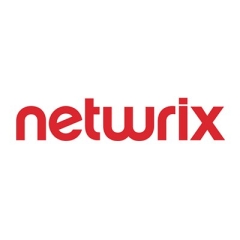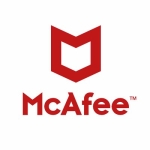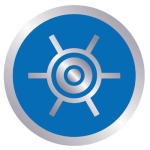What is our primary use case?
I work for a financial services company. As a consequence, we work with multiple lenders and lender clients; essentially banks and building societies. There's a requirement in this industry for tight controls from an information security point of view. For many years we've had industry requirements to deploy a number of technical controls to secure things like device control.
Prior to using Endpoint Protector, we used Ivanti Device Control. However, from the UI point of view, it was a bit of a dated product, and some of the functionality wasn't brilliant. We also took a recommendation from our service provider, who had been using this product with other customers, and as such we deployed CoSoSys Endpoint Protector. We primarily have one single purpose, which is to secure all of our endpoints, mostly laptops. We have a very small number of client computers as well, but we primarily use it to block all removable media and all USB points on the laptops.
As a business, we don't enable and support the use of removable media. We do have a small number of use cases where that is allowed, primarily within our IT team, but they are the exception. As such, every single USB port is blocked across the business with Endpoint Protector to mitigate the risk of somebody intentionally, accidentally, or for whatever reason being tricked into inputting their USB drive into our network which would then cause potentially a risk to the confidentiality, integrity, and availability of our data.
We have a contractual requirement for us to have a tool like CoSoSys. It mitigates risk for us as a business by enabling us to be sure that no one can exfiltrate data from our company via USB media or be infected by malware by plugging a device into an endpoint.
We only use that one particular feature. I believe there are other features available but I don't believe we pay for the other elements of functionality of the software. There are other features like DLP within the software, however, we have a suite of additional tools within our business to control those other elements so we use CoSoSys exclusively for device control.
We only use it for a very small use case. It certainly has a wide range of functionality, although, we don't use the vast majority of the functionality because we don't pay for it or because we have other tools in place that are specific for a certain purpose.
What is most valuable?
The granularity of the policies that we can create is good. We block USB media. One of the reasons we left our previous provider is because of the lack of this functionality. We have built some custom rules to make exceptions for staff members that should be able to use USB media. Of course, the ability to amend and write policies is far more granular than the previous product that we used. Switches, disabling and blocking Bluetooth, weren't available with our previous supplier.
The feature that locks down USB devices means that if you plug removable media into any of our USB drives, it blocks it. As we block, we blacklist all the types of USB devices, and the cloud running trail blocks that. If someone puts the USB drive in, it will block them from opening that drive or even registering that drive. If they want to make an exception, they have to make a formal request to do so, and that can be made either by email or through an application to our IT desk.
The versatility regarding the exit point Endpoint Protector supports in making sure that important data doesn't leave our organization is vital for us. In the industry that we're in, data breaches are a significant concern. While our staff is contractually required to maintain confidentiality and they're all very aware that they shouldn't try and transfer company data of different classifications elsewhere to non-company devices, there's a risk. If we didn't have Endpoint Protector in place, they could plug in a USB drive, copy a file onto the USB drive, and then take that onto their personal computer or share it externally, whether that be with the press or the public, etc. This tool stops that from happening. It means employees are unable to share files and exfiltrate data via that channel.
We have other controls to stop other channels. One of the biggest concerns for us as a business is employees sharing data via the internet, dragging files and confidential information from our computer drives into Dropbox or into Webmail, et cetera. We have other controls and tools to stop that. But Endpoint Protector is used exclusively to stop USB media.If we didn't have Endpoint Protector in place, they could plug in a USB drive, copy a file onto the USB drive, and then take that onto their personal computer or share it externally, whether that be with the press or the public, etc. This tool stops that from happening. It means employees are unable to share files and exfiltrate data via that channel.
We have other controls to stop other channels. One of the biggest concerns for us as a business is employees sharing data via the internet, dragging files and confidential information from our computer drives into Dropbox or into Webmail, et cetera. We have other controls and tools to stop that. But Endpoint Protector is used exclusively to stop USB media.
For how long have I used the solution?
I have been using Endpoint Protector for 18 months.
What do I think about the stability of the solution?
The stability is very comfortable. We have no qualms or concerns. There have not been any incidents or issues with it not working, or any problems that I'm aware of. Any kind of such problems would be raised to my attention and discussion review, and there haven't been any concerns raised by users or with our IT service desk. There has been no concern there.
What do I think about the scalability of the solution?
Scalability is about the policies. We could deploy it simply to larger groups of people as and when required. There's a procedure where we deploy using an RMM tool. It's easy to deploy.
At present, we don't have plans to increase usage. We have a number of different controls and requirements, and we have specialist tools for each of the different requirements. We're also trying to move towards a Microsoft stack where possible because we have so many different tools in use. Microsoft doesn't do device control.
How are customer service and technical support?
I have never personally been involved with technical support. There was joint deployment with our MSP. There have been no problems, so I think it's fairly positive.
Which solution did I use previously and why did I switch?
We were previously using Ivanti.
How was the initial setup?
The setup was quite straightforward and didn't cause any issues. But I wasn't involved. Our IT system team deployed it around 18 months ago. I was quite new to the business at the time. It went relatively smoothly, there were no hiccups, and there were no deployment problems.
It took under a few weeks to implement. It was not a couple of weeks of solid work. We deployed it slowly within a UAT testing environment and only on a small number of laptops. Once we were comfortable that the config was working as expected, then we deployed our tool to other users. We deployed the end client to all endpoints using an RMM tool we use from SolarWinds.
What about the implementation team?
We have a managed service provider who we use to support some of our IT needs. They were the ones who recommended the products and they would have been the ones who actually implemented the product and do much of the actual deployment with our IT service desk.
The implementation required around 2-3 staff members. It was one person from the MSP and two people in-house who would have worked on that project to deploy it. It was a normal project team for the deployment of that size.
Day-to-day maintenance only requires one or two employees. We don't have somebody looking at it daily, but our service desk will review it, update it, and amend things within the tool as and when required. It really runs by itself, it's not a huge amount of maintenance, which is a good thing.
What was our ROI?
ROI is very hard to quantify but Endpoint Protector is ultimately priceless. If device control wasn't in place, any single data breach that could occur as a consequence of a USB device being able to transfer data externally could result, for us as a business, in considerable loss, and considerable fines. There are massive fines for data breaches in the UK.
Data breaches could have a very significant reputational impact on our business. It's very difficult to quantify, but we haven't had any of these breaches. If we didn't have Endpoint Protector in place, we would be at a higher risk.
What's my experience with pricing, setup cost, and licensing?
The pricing is very fair. No concerns. We don't have massive budgets, we're quite a small company, but we don't have small budgets either. I think it's quite competitive.
I don't believe there are additional costs in addition to standard licensing.
Which other solutions did I evaluate?
We reviewed Ivanti Device Control, which is the previous tool we were using, and we compared it with Endpoint Protector's product set. Then we compared the prices and compared the features, and decided to go with Endpoint Protector over the previous supplier.
What other advice do I have?
We have a third-party that automatically encrypts confidential data transferred to USB storage devices. That's not a use case for us with Endpoint Protector.
We exclusively use Windows. We do have instances of Linux, but from an endpoint point of view, it is exclusively Windows.
As a business, we're never going to move into a Mac OS environment, so the fact that it supports Windows, Mac, and Linux wouldn't be one of our prerequisites. We looked at Endpoint Protector to make sure it supported Windows but the fact that it supports all platforms wasn't that important to us. Obviously, if it didn't work with Windows we wouldn't have used it, but from that point of view, it's not important for us now.
We also don't use it to search for keywords that are important to our business. We have a third-party tool we've had in use for several years that classifies all our data and ensures that we have visibility of where data is and what type of data is at risk.
I would rate Endpoint Protector an eight out of ten. I'm by no means an expert on the tool, however, it does appear to offer quite a large range of different functions within the toolset. Sometimes, it should try to focus on one thing rather than multiple things. Endpoint Protector does device control very well, which is why we use that particular function.
Disclosure: PeerSpot contacted the reviewer to collect the review and to validate authenticity. The reviewer was referred by the vendor, but the review is not subject to editing or approval by the vendor.






















